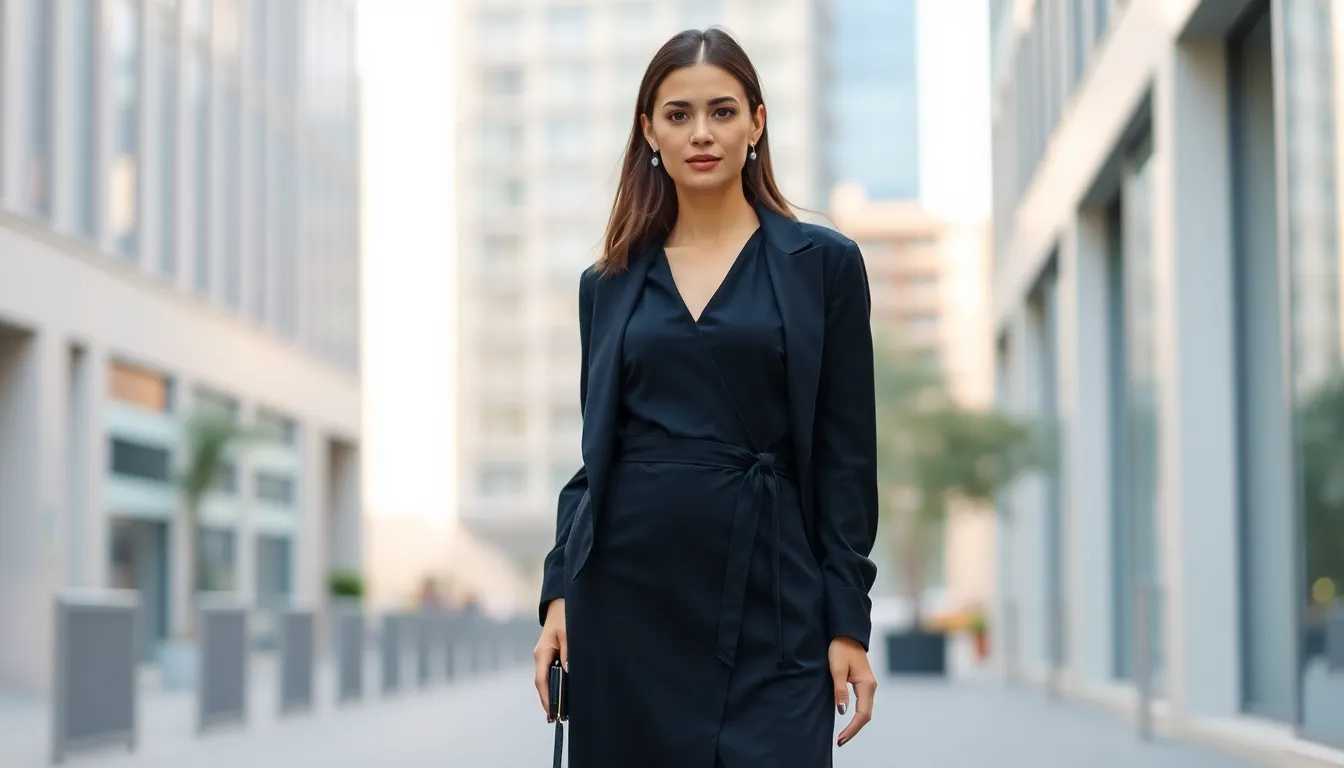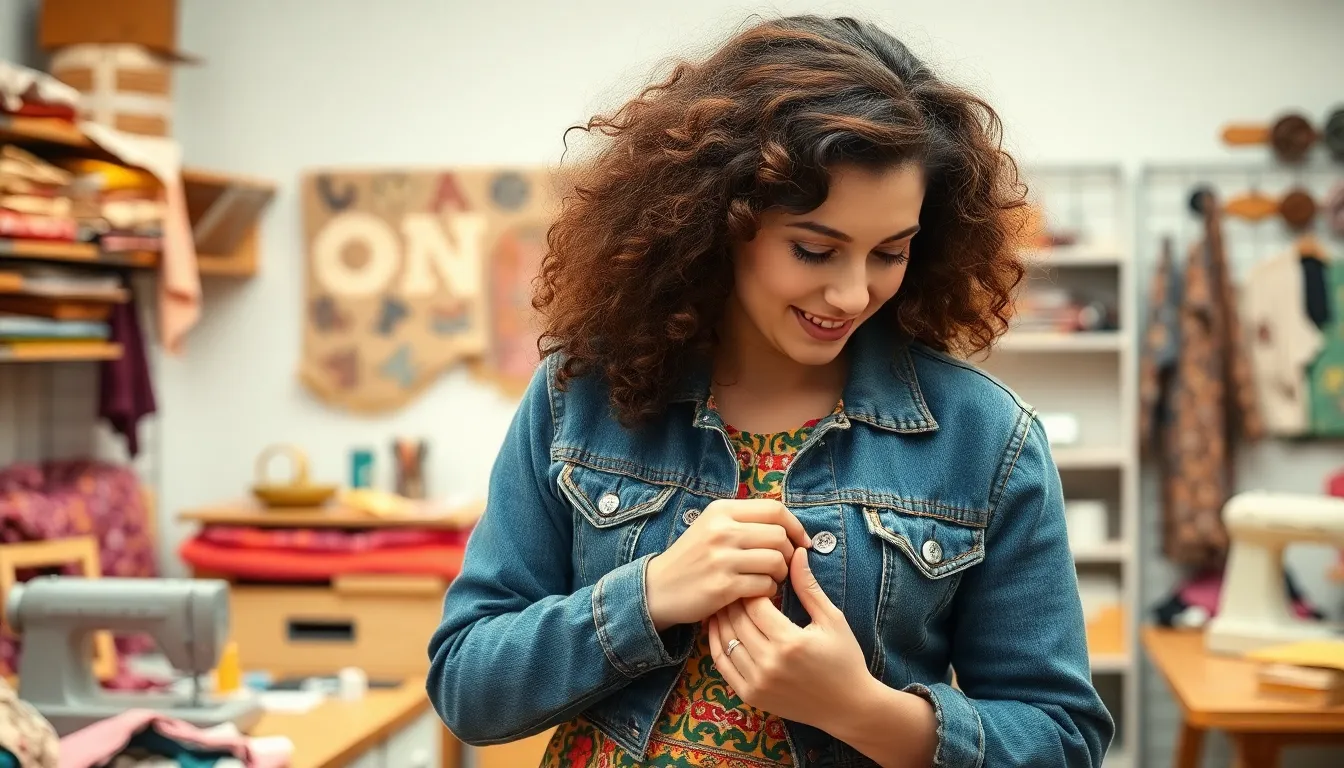In a world overflowing with fast fashion and cluttered closets, minimalist fashion design emerges like a breath of fresh air. It’s the chic antidote to the chaos of trends that come and go faster than one can say “wardrobe malfunction.” By embracing simplicity, minimalist fashion champions clean lines and versatile pieces that effortlessly blend style with function.
Table of Contents
ToggleOverview of Minimalist Fashion Design
Minimalist fashion design emphasizes simplicity and functionality. It avoids excessive embellishments while focusing on essential elements of style. Clean lines and neutral colors dominate this aesthetic, promoting versatility in clothing choices. Designers prioritize quality over quantity, creating pieces that withstand trends and time.
In minimalist fashion, versatility plays a crucial role. Items often feature multi-functional designs, allowing for various styling options. For instance, a classic black dress can transition from day to night with simple accessory changes. By choosing a few high-quality staples, individuals can create numerous outfits, reducing the need for cluttered wardrobes.
Sustainability also factors into the minimalist ethos. This approach encourages consumers to invest in durable garments instead of fast fashion items. Long-lasting materials reduce environmental impact, aligning with an increasing awareness of ethical consumption. A focus on responsible practices complements the minimalist aesthetic, highlighting thoughtful design.
The impact of minimalist fashion extends beyond clothing. It influences lifestyle choices and promotes a mindset prioritizing quality experiences over material possessions. By embracing fewer, well-made items, individuals can establish a distinct personal style that reflects their values.
Minimalist fashion speaks to those seeking clarity and intentionality in their wardrobes. Clean silhouettes provide a timeless appeal, suitable for various occasions. In summary, minimalist fashion design serves as a conscious reaction to the chaos of fast-paced trends, emphasizing enduring style and practical elegance.
Key Principles of Minimalist Fashion

Minimalist fashion centers around a few key principles that capture its essence and distinct appeal. Understanding these principles showcases why this design approach resonates with many.
Simplicity in Style
Simplicity defines minimalist fashion. Clean lines characterize garments, allowing for an uncluttered aesthetic. Essential pieces, such as tailored trousers or a fitted blouse, enable easy mixing and matching. Functionality remains a core focus, ensuring garments serve multiple purposes. Designers often eliminate excess detail, creating timeless silhouettes that prioritize elegance. Minimalist outfits encourage self-expression without overwhelming the wearer. Stripping away the unnecessary allows individuals to shine through their clothing.
Neutral Color Palettes
Neutral color palettes dominate minimalist fashion design. Shades like beige, gray, and black serve as the foundation of this style. These colors create versatility, making it easier to coordinate outfits for different occasions. Minimalist designers frequently utilize earth tones and muted hues to evoke a sense of calm. Such palettes promote a relaxed yet sophisticated look, attracting those who appreciate understated elegance. Choosing neutral shades allows wearers to blend personal style with the principles of minimalism seamlessly. A wardrobe grounded in these colors enhances the overall lasting appeal of minimalist clothing.
The Evolution of Minimalist Fashion
Minimalist fashion has its roots in various historical movements. It emerged as a response to excess, simplifying aesthetics while prioritizing function. Influences can be traced back to the Bauhaus movement of the early 20th century, which emphasized form following function in design. During the 1960s and 1970s, the minimalist art movement further shaped fashion, focusing on simplicity and monotone palettes.
Historical Context
Minimalist fashion began to gain prominence in the late 20th century. Designers reacted against the extravagant and flamboyant styles that dominated the 1980s. They sought to create garments that featured clean lines and understated elegance. In the 1990s, brands like Jil Sander and Calvin Klein played pivotal roles, spotlighting minimalist aesthetics. This era saw a cultural shift toward valuing sustainable and mindful consumption, aligning with minimalist ideals.
Influential Designers
Several designers significantly shaped the minimalist fashion landscape. Jil Sander, often referred to as the “Queen of Less,” revolutionized women’s fashion with her sleek and tailored silhouettes. Martin Margiela challenged conventions by deconstructing traditional forms, emphasizing functional designs. Calvin Klein’s signature styles showcased simplicity, often focusing on basic monochromatic staples. Each designer contributed to an evolving narrative that highlighted the essence of minimalism, influencing countless others in the industry.
Benefits of Minimalist Fashion Design
Minimalist fashion design offers numerous advantages that enhance the overall appeal of clothing. It emphasizes simplicity and practicality while promoting a sustainable lifestyle.
Versatility and Timelessness
Minimalist pieces are inherently versatile. A classic black dress, for example, transitions effortlessly from day to night with the right accessories. Combining minimal items allows for endless styling possibilities, making outfit choices uncomplicated. Timeless silhouettes remain relevant despite passing trends, so individuals can invest in a few key pieces. Essential garments maintain style longevity, reducing the need for frequent wardrobe updates. Easy mixing and matching foster creativity and personal expression, ensuring that each outfit tells its own story.
Sustainability in Fashion
Sustainability serves as a cornerstone of minimalist fashion design. Consumers enjoy durability in garments rather than fast fashion items that quickly wear out. Prioritizing quality over quantity reduces environmental impact significantly. Many minimalist brands focus on ethical production practices, promoting transparency and responsibility. Fewer purchases contribute to a declining demand for throwaway culture, resulting in a more sustainable fashion industry. By embracing this ethos, individuals foster a lifestyle that values environmentally conscious choices, reflected through their wardrobes.
Challenges and Criticisms
Minimalist fashion design faces several challenges and criticisms despite its growing popularity.
Perception of Minimalism
Minimalism often encounters mixed perceptions. Some associate it with a lack of creativity, suggesting that simplicity may limit self-expression in fashion. Others question whether minimalist aesthetics cater only to specific lifestyles and aesthetic preferences. Critics also argue that minimalism can come across as elitist, implying that only those with certain tastes can appreciate its subtleties. Engaging discussions around these perceptions highlight the diverse views on simplicity in fashion and its significance in cultural contexts.
Accessibility and Affordability
Accessibility poses a significant challenge in minimalist fashion. High-quality minimalist pieces often come with steep price tags, making them less reachable for budget-conscious consumers. Many individuals feel excluded from the minimalist trend if they can’t afford staple garments often touted by high-end brands. Additionally, some argue that the marketplace does not provide enough affordable options that adhere to minimalist principles, limiting participation. As a result, these barriers may hinder the widespread adoption of minimalist fashion among diverse demographics.
Minimalist fashion design stands as a testament to the power of simplicity and intentionality in an era dominated by fast fashion. By prioritizing quality over quantity, it encourages individuals to invest in versatile pieces that not only enhance their style but also promote sustainability. This approach fosters a deeper connection to one’s wardrobe and reflects a commitment to ethical consumption.
While challenges remain in terms of accessibility and perceptions of elitism, the growing interest in minimalist fashion suggests a shift towards a more thoughtful and sustainable industry. As consumers increasingly seek out mindful choices, minimalist fashion offers a refreshing path that balances elegance with practicality, allowing personal style to flourish amidst the chaos of modern trends.




